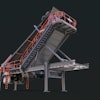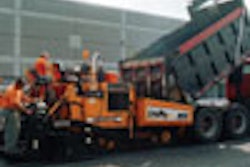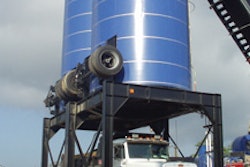Aggregate jaw crushers are built tough, but they still require daily and other regular maintenance checks to keep them in safe, top-performance condition. How much maintenance is required depends on whether your crushing plant is run under normal operating conditions or adverse conditions.
A walk-around inspection should be conducted on a daily basis. Taking a few minutes each day to inspect the crusher can go a long way in identifying potential problems and fixing them before they become more serious. Check the following:
- Make sure all guards are in place and functional. Repair or replace any damaged or missing guards or guarding devices.
- Repair or replace any damaged handrails, ladders or walkways.
- Tighten any loose nuts, bolts and set screws.
- Clear away built-up dirt and debris.
Also, check moving jaw bolts for tightness. At the same time, check the heel and key plate bolts for tightness. Inspect the stationary and moving jaws for wear. If jaws show excessive wear, rotate or replace.
Lubrication should also be part of your daily maintenance routine. For eccentric shaft bearings with a grease-type system, the daily addition of lubricant is necessary, because a small amount of lubricant continually passes through the labyrinth seals, flushing out accumulated dirt. Clean the grease fitting area and add proper lubricant to each bearing housing — one on each side of the crusher. The pitman bearings with grease-type system require the same attention. Remove the fill plug located on the back of the pitman and add proper lubricant.
Some crushers may be fitted with an optional circulating oil system. If oil is not visible in the sight glass, add what is required to maintain a visible oil level. Check the flow indicators. Reading displayed on the flow indicators will vary depending on oil viscosity. If readings fluctuate or if an indicator shows no reading, the oil supply to the bearings may be insufficient and the bearings could overheat. Stop the crusher and check for a broken or plugged oil line.
Tension rod and spring, and flinger collars are two other daily maintenance matters that should be addressed. Spring nuts should be tightened just enough to keep the toggle plate from knocking. Normal adjustment requires about 1 1/4 inch spring compression. Additional compression may be required. Lubrication should be added to the inner and outer liner collar. Add grease until old grease begins to purge from the collar.
50-hour maintenance
After 50 hours of operation, check the key and heel plates for excessive wear. These plates must be replaced before they have worn to the point where damage may be done to the crusher base.
This is also a good time to inspect the toggle plate and toggle seats for excessive wear. Replace these parts at this time if required.
200-hour maintenance
After 200 hours of operation, inspect the flywheel and bearing bolts for proper tightness.
You should also replace the circulating oil lube system filter and add lubricant to the visible level in the sight glass. Remember to clean the circulating oil lube system breather located on top of the pitman bearing house.
1,000-hour maintenance
At 1,000 hours of operation, your crusher should undergo a major lubrication service. Remove the pitman and bearing fill plugs and fill the housings with oil. Bring the crusher up to operating speed, then shutdown and drain the housings. Refill housing with proper lubricant.
At this time, you will also want to drain the lubrication oil tank, flush with clean lubrication oil, replace the filter and refill with proper lubricant. The amount of lubricant required will vary depending on how much fluid is drained from the lines and pump.
Fill the tank until lubricant is visible in the sight glass. Operate the crusher to fill system components, and then recheck the lubricant level.
To make sure you're maintaining your jaw crusher according to the manufacturer's recommended intervals, it's a good idea to record the number of service hours and the date when each maintenance item has been addressed. It's a practice that will help you keep your crusher operating safely and in top condition.
Information provided by Kolberg-Pioneer Inc.


















